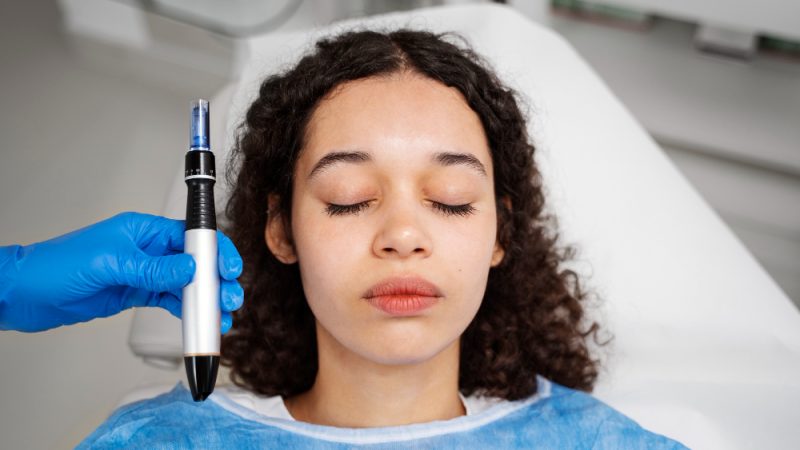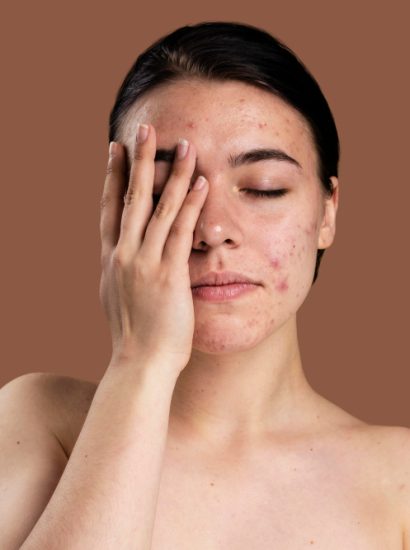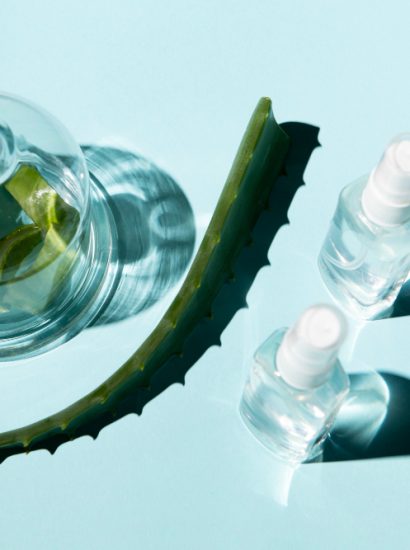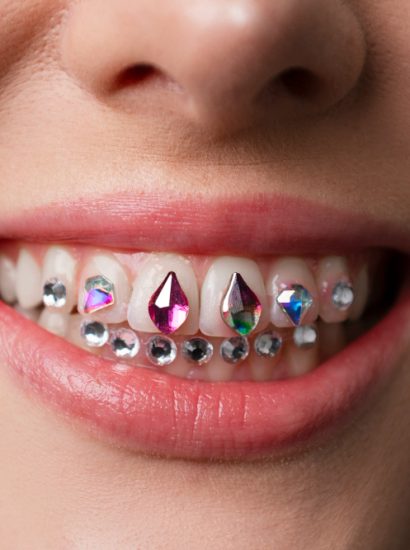Scars are a natural response to injury, but for many people, they can be a source of insecurity. Whether caused by acne, surgery, or accidental injuries, scars often disrupt the smoothness and appearance of the skin. One of the most effective and widely used treatments to improve scar texture is microneedling. This procedure has grown rapidly in popularity because it is minimally invasive, safe for most skin types, and highly effective. In this article, we explore what microneedling is, how it works for scars, and why so many people consider it their go to solution for skin healing.
Understanding Microneedling
Microneedling is a cosmetic procedure that uses a device equipped with tiny needles to create controlled micro injuries on the surface of the skin. These micro injuries stimulate the body’s natural healing process. When the skin senses a wound, it triggers the production of collagen and elastin. These two fibers are essential for maintaining skin structure, firmness, and elasticity. Microneedling essentially encourages the skin to repair itself, resulting in a smoother and more even appearance. It is often performed using a handheld pen like device operated by a skincare professional.
How Microneedling Works for Scars
Scars form when the skin repairs itself after an injury, but the repair process is not always perfect. This can leave behind uneven texture, depressions, or raised areas. Microneedling helps remodel scar tissue by breaking down old collagen and encouraging the development of new collagen. Over time, this softens the scar and improves its texture. For acne scars, microneedling helps fill in indented areas and smooth rough patches. For surgical or injury related scars, it helps fade the appearance by blending the scar with surrounding skin. The result is a softer, less visible scar and a more uniform skin surface.
Types of Scars Microneedling Can Improve
Microneedling is effective for several types of scars. Acne scars are among the most common concerns treated with this method. It helps particularly with rolling scars, boxcar scars, and mild ice pick scars. Surgical scars, such as those left by procedures like appendectomies or C sections, also respond well. Injury scars from cuts, burns, or accidents can show improvement as the skin regenerates. Stretch marks, while not technically scars, also benefit because microneedling stimulates collagen production in the stretched areas. This makes microneedling a versatile treatment option suitable for various scarring issues.
Benefits of Microneedling for Scars
Microneedling offers many advantages for people seeking to improve their skin texture. Because it stimulates the body’s natural healing response, results look natural and long lasting. It is safe for almost all skin tones and types, unlike some laser treatments that may pose risks for darker skin. Microneedling improves overall skin quality by increasing firmness, reducing fine lines, and enhancing radiance. It also enhances the absorption of skincare products because the micro channels temporarily allow deeper penetration. Most importantly, microneedling provides visible improvement in scar appearance without requiring extensive downtime or invasive procedures.
What to Expect During a Microneedling Session
A typical microneedling session begins with a consultation to assess your skin and determine the best approach. On the day of treatment, the skin is cleansed thoroughly and a numbing cream is applied to reduce discomfort. Once the skin is numb, the practitioner glides the microneedling device across the targeted areas. You may feel a slight prickling sensation, but it is usually very tolerable. The procedure usually takes around thirty to sixty minutes depending on the size of the area. After the session, the skin may appear red and slightly swollen, similar to a mild sunburn. These effects fade within a day or two.
How Microneedling Helps Skin Heal
Microneedling helps the skin heal from scars through its ability to stimulate collagen remodeling. When the tiny needles create micro injuries, the body responds by increasing blood flow and sending growth factors to the area. This initiates the wound healing process. New collagen forms in the deeper layers of the skin over several weeks. As collagen builds, it fills in depressed scars, softens rough textures, and strengthens the skin structure. Because the results come from natural collagen production, improvements look progressive rather than abrupt. The skin gradually becomes smoother and more refined as healing continues.
How Many Sessions Are Needed for Results
The number of sessions required depends on the depth and type of scars. Mild scars may show improvement after two or three sessions. Moderate or deep scars often require four to six sessions spaced about four weeks apart. Because collagen formation is a slow and natural process, results continue to develop over several months. Many people notice smoother texture and a reduction in scar visibility after a few treatments. For best results, a full treatment plan is usually recommended rather than relying on a single session. Over time, the skin becomes healthier and more resilient.
Aftercare and Recovery
Proper aftercare is essential to maximise the results of microneedling. After treatment, the skin is more sensitive than usual. It is important to avoid sun exposure and apply sunscreen daily to prevent irritation or pigmentation. The skin should be kept clean and moisturised. Gentle cleansers and hydrating products are recommended while active ingredients such as retinol or acids should be avoided for a few days. The skin might feel slightly rough or dry as it heals, but this is normal. Avoid touching or picking at the skin during recovery. With good aftercare, the healing process is smooth and results become more visible each week.
Potential Side Effects and Safety Considerations
Microneedling is considered safe for most individuals when performed by a trained professional. Common temporary side effects include redness, mild swelling, and slight sensitivity. These effects typically resolve within a few days. Rare side effects may include prolonged irritation or infection if proper hygiene is not followed. People with active acne, eczema, or certain skin conditions may need to postpone treatment until the skin is stable. Pregnant individuals should avoid microneedling unless advised otherwise by a medical professional. Overall, the procedure offers a high safety profile with minimal risks when performed correctly.
Comparing Microneedling With Other Scar Treatments
Microneedling is one of several options for improving scars. Laser resurfacing uses heat to target deeper layers of the skin but may involve more downtime and cost. Chemical peels exfoliate the top layers of the skin but may not reach deeper scars effectively. Dermal fillers can temporarily fill in depressed acne scars but require repeat treatments. Compared to these options, microneedling offers a balance of effectiveness, affordability, and low downtime. It also avoids the heat used in lasers, making it more suitable for darker skin tones. Many people choose microneedling because it delivers visible results through natural collagen stimulation.
Conclusion
Microneedling has become one of the most trusted treatments for reducing scars and improving overall skin texture. By stimulating collagen production and encouraging the skin to heal from within, it softens scar tissue and creates a smoother, more even complexion. The procedure is minimally invasive, safe for most skin types, and delivers long lasting benefits. Whether you are dealing with acne scars, surgical scars, or stretch marks, microneedling offers a powerful solution with gradual and natural looking improvement. With proper aftercare and a personalised treatment plan, microneedling can restore confidence and help the skin look its healthiest.
FAQs
Does microneedling work for all types of scars
Microneedling works well for many types of scars including acne scars, surgical scars, and injury related scars. However, very deep or severe scars may require combined treatments for best results.
Is microneedling painful
Most people find microneedling tolerable. A numbing cream is applied before the procedure to minimise discomfort. You may feel slight prickling but it is generally manageable.
How long does it take to see results
Initial improvements can appear within a few weeks, but full results usually develop over two to three months as collagen production increases.
Can microneedling be done at home
Home microneedling devices are available but they are not as effective or safe as professional treatments. Professional sessions offer deeper penetration and controlled precision.
How long do microneedling results last
Results can last for several months or longer depending on the severity of the scars and maintenance treatments. Many people schedule occasional follow up sessions to maintain improvements.
Also read: Glass Skin Mask How It Works and Why Everyone Is Using It





